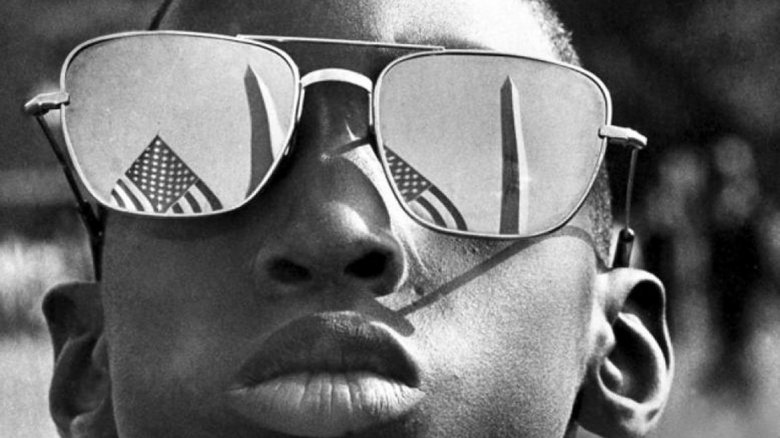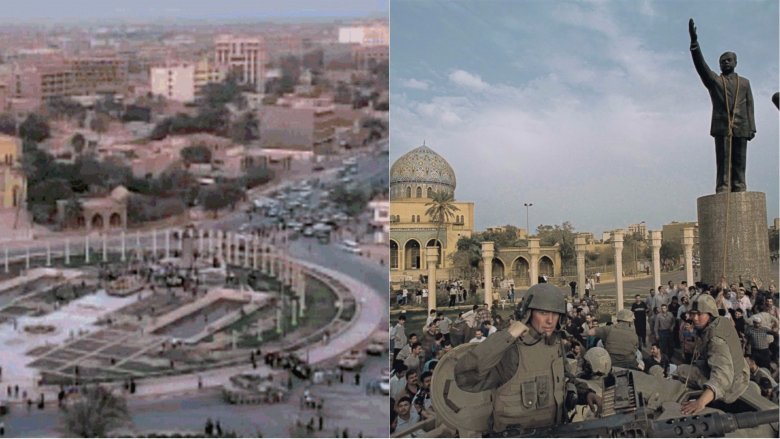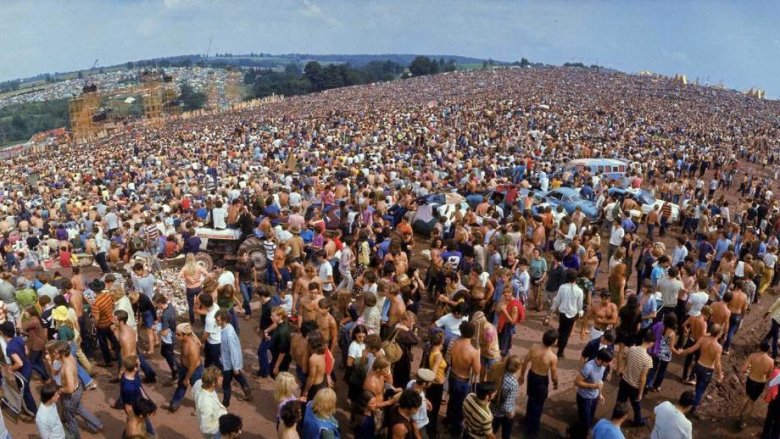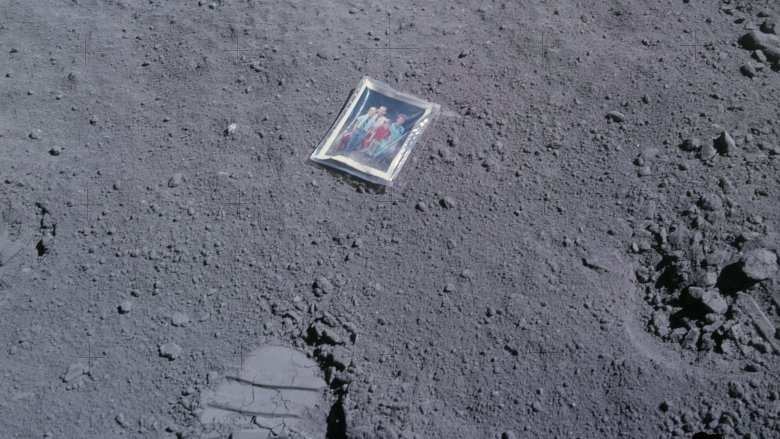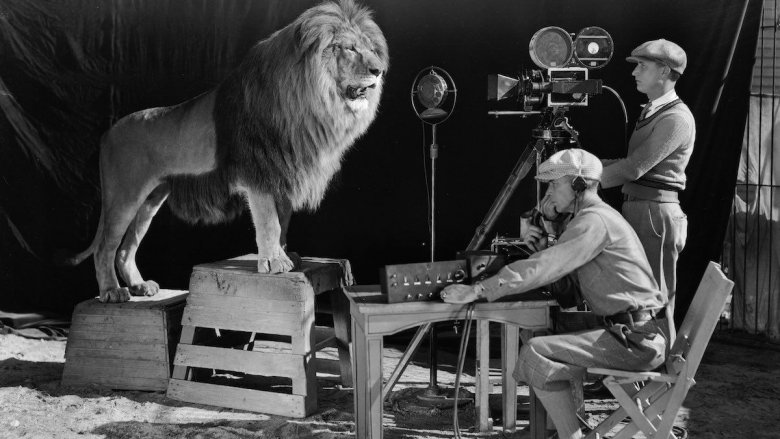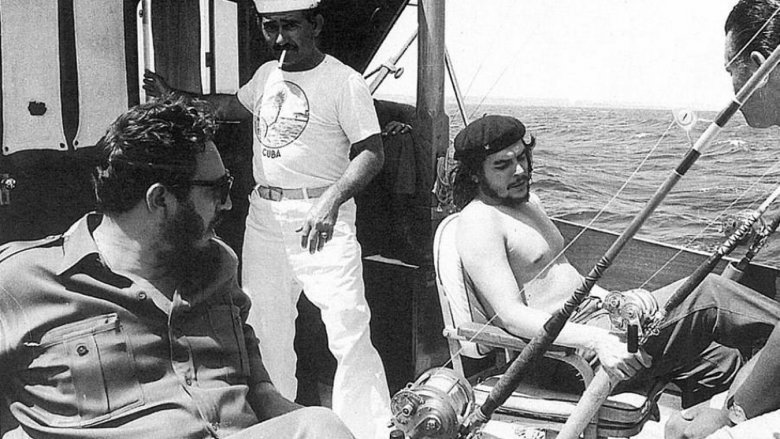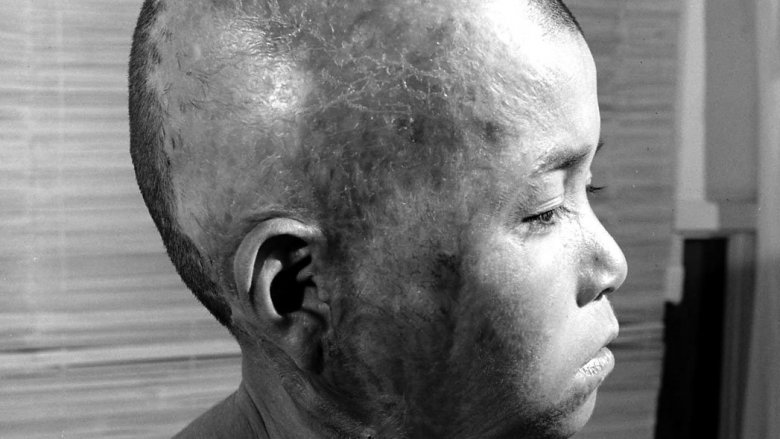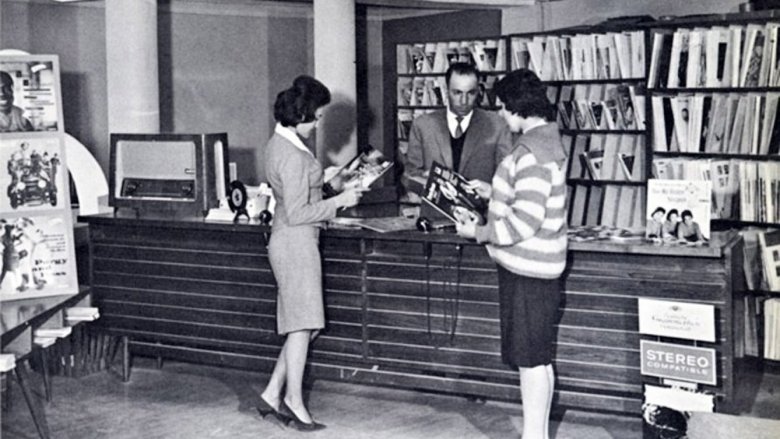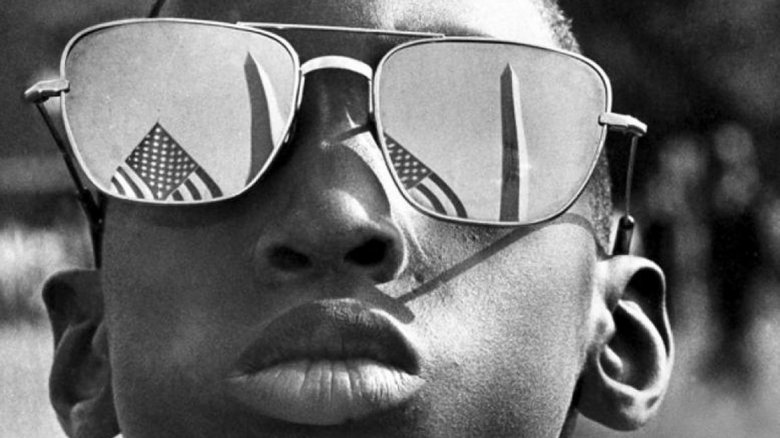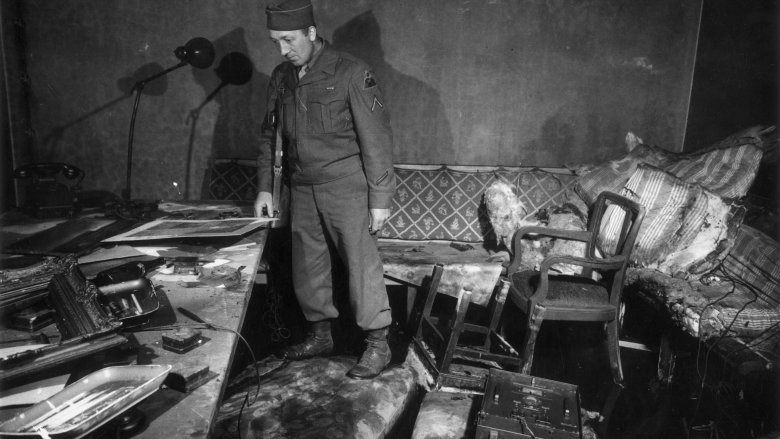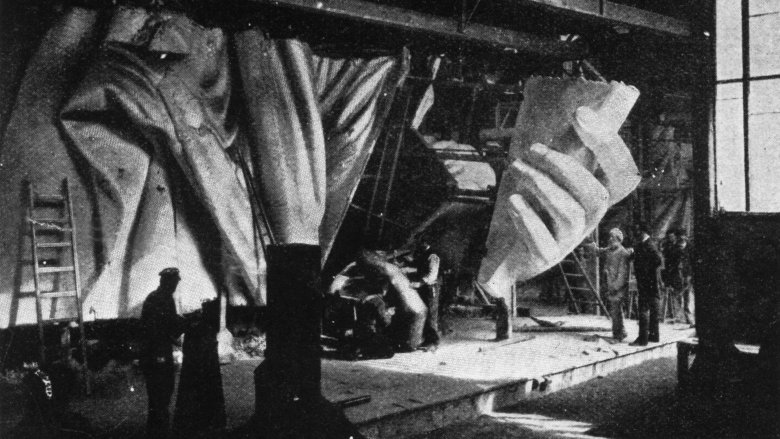Photos That Will Change The Way You Look At History
There's no question that photography is one of the greatest inventions that human beings ever came up with. Since cameras hit the scene, some of the most monumental events in history have been captured eternally, for all future generations to look back on, allowing civilization to relive the greatest hits — and worst horrors — of humankind, as if we were all there to experience it firsthand.
Many photographs have become so iconic that everyone knows them by heart, like the crash of the Hindenburg, that one male sailor kissing a woman in the center of Times Square, or the solitary protester standing in front of the tanks in Tiananmen Square. On the other hand, some lesser-known photos are equally significant in their own way. When looked at, these photos shine a new light on some of the most important events of the 20th and 21st centuries.
Saddam Hussein's statue being toppled by the U.S. military, not Iraqi civilians
For conclusive evidence that sometimes "history" is carefully manipulated to suit a certain narrative, look no further than the infamous U.S. invasion of Iraq in 2003, which stands today as one of the most controversial wars in recent times. Most people know the invasion was ostensibly due to the belief that Saddam Hussein might possess "weapons mass destruction" — a claim that was later proven false, as described by The Guardian. However, what many don't realize is that one of the most notable scenes from the war was actually just a careful media manipulation.
Remember that moment when a massive crowd of gleeful Iraqi civilians tore down a statue of Saddam Hussein? Well ... that's not actually what happened. It was the U.S. military that took down Saddam's statue, according to the LA Times. Furthermore, as seen in the photo above, the "crowd" was nowhere near as big as it looked on TV.
The whole thing was staged by an Army psychological operations team, which used careful tactics like loading the vehicle that pulled down the statue with Iraqi children, in order to make the toppling statue look like the result of a spontaneous rally rather than a planned event. As LA Times reporter David Zucchino later told NPR, the toppling of Saddam's statue was a careful media manipulation event done to earn support from the international community — and critics back in the States — by making it look as if the Iraqi people were joyously celebrating the U.S. occupation.
The massive size of the Woodstock crowd
It could be said that the single most memorable and talked-about moment of '60s counterculture was the Woodstock Festival in Bethel, New York, which closed out the hippie decade with what was billed as "Three Days of Peace and Music." If it ever seems like everyone you know has at least one uncle, aunt, family friend, or cousin who went to Woodstock, it might be because there were just so many people there. It would almost be more surprising if you didn't know someone. As the photo above makes clear, Woodstock was truly Huge, with a capital H. Woodstock was the event that capped off the era of long hair, free love, rebellion, and protests against the Vietnam War, and there was nothing else like it.
According to History, the Woodstock organizers originally figured they'd get an audience of 50,000 folks for their festival, but they soon found out it was going to be more like 200,000. Then, once the day finally came, they were so overwhelmed by a blockbuster crowd of over 400,000 people that they were forced to allow entry free of charge. The festival featured performances by such artists as The Who, Arlo Guthrie, Jimi Hendrix (with an unforgettable solo rendition of the Star-Spangled Banner), and Crosby, Stills, Nash & Young.
Woodstock was truly the event of its era, a reputation cemented by a successful 1970 documentary. Though many music festivals have since tried to replicate its success, nothing else has ever quite come close.
The family photo that's still sitting on the Moon's surface
Everyone always remembers the famed Apollo 11 Moon landing in 1969, where two guys named Buzz Aldrin and Neil Armstrong became the first people to confirm that the giant white thing in the sky wasn't actually made of cheese, didn't have a face on it, and wasn't hiding an army of Decepticons. (Whew.) The footage of the Apollo 11 Moon landing pops up everywhere, but considerably less attention is given to the fact that NASA soon followed up on this achievement by sending more manned missions to the Moon, all named Apollo. For the record, none of them were filmed in Arizona.
The inherent weirdness of the photo above, from the 1972 Apollo 16 mission, truly puts things in perspective. Seeing such a normal human photograph lying around on alien rocks makes it all too clear just how surreal and otherworldly it is that a species of hairless apes like us managed to land on the Moon, of all places.
According to Business Insider, the family photograph was left there by Apollo 16 astronaut Charles Duke. On the back, he wrote "This is the family of astronaut Charlie Duke from planet Earth who landed on the moon on April 20, 1972." As for why Duke took a photograph of a photograph, he says it was done to prove to his kids that he really did leave the photo there. So, in a way, he brought the whole family to the Moon with him.
Filming the lion in the MGM production logo
Anytime you walk into a movie theater and sit down to munch on some popcorn, the screen lights up with the production logo or one movie studio or another. For example, 20th Century Fox shows you those giant gold letters getting scanned with searchlights. Warner Bros. flashes that distinctive shield, and Marvel Studios throws so many decades' worth of classic superheroes at you that you could make a game out of naming them all. However, perhaps the most easily recognizable movie studio logo of all time is the one used by Metro-Goldwyn-Mayer in countless films throughout the 20th century: you always know you're about to watch a classic MGM film when Leo the Lion roars at you.
The insane thing about the photo above is that by now, we're so familiar with Leo the Lion that we never stop to realize that at some point, some crazy dude had to actually film that big cat roaring at him, and he did it from just a few feet away. This photograph is from 1928. Mashable reports there have actually been seven different "Leo" lions through the years. The one pictured above was named Jackie, and it was this lion that roared in front of The Wizard of Oz. Jackie would go on to survive a plane crash in 1927 and died in captivity in 1935 after "retiring" to the Philadelphia Zoo.
Che Guevara and Fidel Castro fishing together in 1960
Even major Cuban historical figures spend their downtime doing the same sorts of casual things that everyone else does. The surreal nature of this black and white photo, snapped by Alberto Korda, is due to just how normal it looks. Both Guevara and Castro have become hugely symbolic figures — for example, when you think of Che, chances are you visualize that one famous head shot (also taken by Korda, according to the Telegraph). However, this simple fishing photo shows these two self-proclaimed revolutionaries in a softer, more personal light: just two guys sitting on a boat, talking about stuff.
This photo was one of many that Korda took from 1959 to the early 1960s, which showed both men doing everything from playing golf in military uniforms to meeting up with author Ernest Hemingway. This unique collection from Korda's long and notable career was made public in 2010 and auctioned off in England.
A young Japanese survivor of the atom bomb
In the traditional narrative, the epic "story" of World War II basically ends when the United States drops the two atomic bombs on Hiroshima and Nagasaki in 1945, ushering in the nuclear age. However, what this conventional version of the story often leaves out is the ghastly devastation these bombs wrought on the population of Japan. As told by Time, the bombing instantaneously killed tens of thousands of human beings, while thousands more suffered from radiation sickness, cancer, and burn scars for the rest of their lives.
The photo above is from 1949, four years after the bomb dropped. Seen here is a young boy who was in Hiroshima in 1945, and as a result suffered horrible burns to his face, head, and arms, requiring extensive medical treatment. At the time, the deadly side effects of being in the radius of a nuclear bomb were not known to the public quite as they are now, and Hiroshima survivors dealt with numerous health ailments in the decades afterward.
Details like this are probably a large part of the reason Albert Einstein, whose earlier efforts led to the development of nuclear weapons, came to regret lobbying the government to build the awful bomb. According to The Atlantic, he once stated, "Had I known that the Germans would not succeed in producing an atomic bomb, I would have never lifted a finger."
The Afghanistan that time forgot
For years, violent and disturbing images of Afghanistan under the Taliban's authoritarian rule have been burned into everyone's collective memory. However, in the decades before this landlocked country became embroiled in the Cold War between the Soviet Union and the United States, Afghanistan was a surprisingly modern, stable, and rapidly developing nation.
The photo above, from the 1950s, shows a very different Afghanistan than the one news programs aired daily during the 2000s. Both Afghan women are wearing pencil skirts and heels, as was fashionable at the time, and browsing music at a record store. Mohammad Qayoumi, who grew up in this Afghanistan, told NPR in 2010 that he remembered the popular musicians of the time being Elvis Presley and Frank Sinatra. His "Once Upon a Time in Afghanistan..." photo essay displays many other snapshots from this lost era. Qayoumi said that during this era, Afghanistan was more stable than most European countries. Despite the hardships the nation has endured in recent times, he had hope for its future, citing an old Afghan saying: "A stream that has seen water before will see water in the future also."
This Afghanistan was vividly depicted in The Kite Runner by Afghan writer Khaled Hosseini. Hosseini came to the United States in 1980s, and when he returned to Kabul, the town he remembered had changed so dramatically that it inspired him to write, "I feel like a tourist in my own country."
A young boy watches the March on Washington, 1963
There are very few events in the history of the United States that are as fondly remembered or as important as the March on Washington that occurred on August 28, 1963. According to History, over 200,000 people converged on Washington D.C. that day, gathering together for a rally and hoping to shine a light on the immense social and political struggles faced by Black Americans. One of the American citizens who stood there that day was a young boy named Austin Clinton Brown, who can be seen in the photograph above.
Brown was only 9 years old when he attended the rally and was captured on film. According to USA Today, Brown was a native of Gainesville, Florida, so he came a long way to attend this monumental event, where Martin Luther King Jr. stood before the Washington Monument and gave his now-legendary and oft-quoted "I have a dream" speech.
The bunker where Hitler killed himself
The final days of Adolf Hitler were far from pleasant, though they don't compare to the countless lives he destroyed, as his death camps led to the murder of an estimated 11 million people, including six million Jews, as well as gypsies, disabled people, gay people, and more, according to the Huffington Post. But in the end, the once-ambitious dictator was forced to crawl beneath the earth as his empire collapsed around him. The Nazi leader's last months were spent in a dark underground hole known as the Führerbunker.
According to Time, Hitler spent a lot of time in his bunker while Allied air raids harassed Berlin. He slept there, lived there at times, and even married Eva Braun within its walls. In the end, this bunker served as the place where both he and Braun committed suicide, either by cyanide capsules or gunshots.
The incredibly eerie pictures from the bunker were taken by Life photographer William Vandivert, who was the first Western photographer to capture pictures from the location. Vandivert took his photos so soon after the Battle of Berlin ended that, in a letter to his editor, he noted that there were still bloodstains on the sofa where Hitler and Braun died.
The Statue of Liberty under construction
If there is one monument that represents the hopes, dreams, and aspirations of the United States, it's the Statue of Liberty. The sight of this giant green (or copper) lady standing over the water has been the definitive representation of the American Dream to countless generations of immigrants. However odd it might seem, there was a time when the Statue of Liberty was just a project under construction, and these photographs from NY Daily News show just what a complicated project she was.
As recounted by History, the Statue of Liberty was a joint effort by France and the United States, with the U.S. responsible for building the pedestal, while the French designed the lady herself. The monument was meant to celebrate the centennial anniversary of American independence, and construction began in 1875. French sculptor Frederic-Auguste Bartholdi reportedly designed the statue's face to resemble his mother, and the monument's inner skeleton was created by Alexandre-Gustave Eiffel, who also designed the Eiffel Tower. Talk about making your mark on history, eh?
Bartholdi poured his heart into the work, and it wasn't completed until 1885. At this point, the Statue was disassembled, packed into crates, and carried over to New York, a process which was a huge deal back in the days before Amazon Prime. It took four months for American workers to assemble the statue and put it up on its pedestal.
